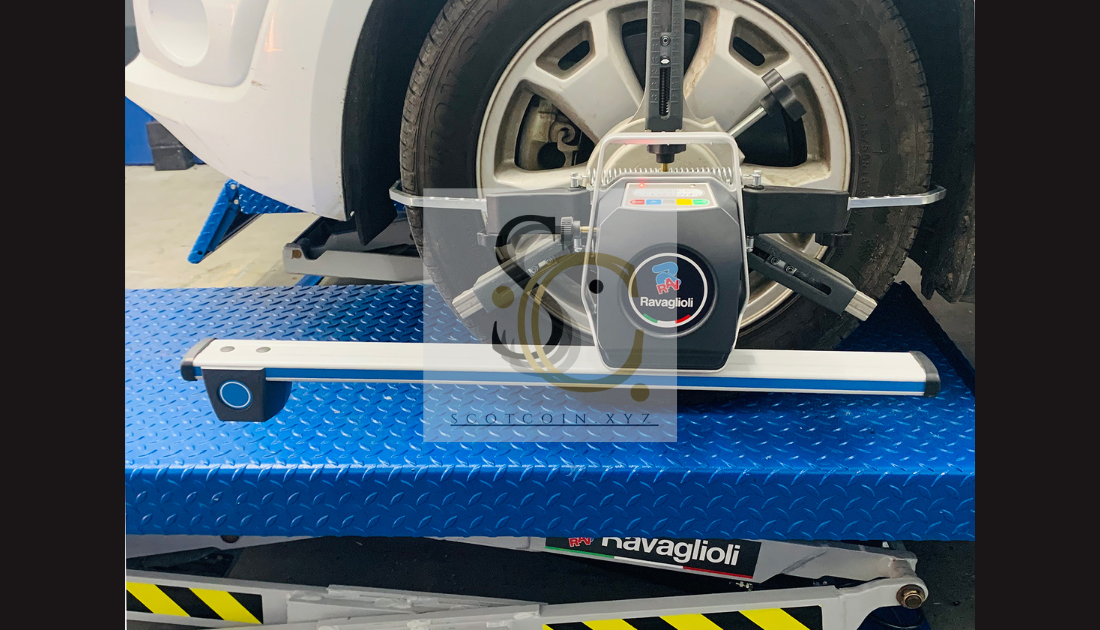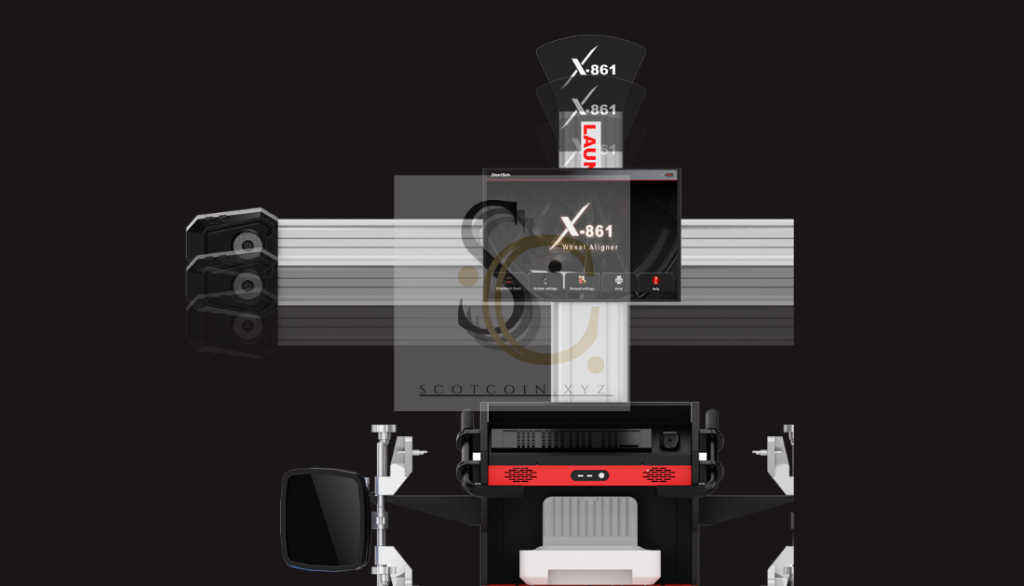Blog
Wireless Alignment System for Safety: Enhancing Vehicle Performance and Protection
Ensuring your car’s wheels are properly aligned is essential for safe driving, optimal performance, and tire longevity. With the advancement of automotive technology, wireless alignment systems are now available, providing greater accuracy and convenience in wheel alignment. These systems offer real-time data on alignment angles without needing physical connections. In this article, we’ll explore how a wireless alignment system enhances safety, improves vehicle handling, and prolongs tire life, making it a worthwhile investment for drivers and automotive service centers alike.
1. Understanding the Importance of Wheel Alignment Before delving into wireless systems, it’s essential to understand why wheel alignment matters. Proper alignment ensures that a car’s wheels point in the correct direction, promoting smooth handling, stability, and even tire wear. When wheels are misaligned, drivers may experience issues like uneven tire wear, poor fuel efficiency, and difficulty maintaining control.
Maintaining proper alignment is critical for safety, as it helps the car stay stable and responsive in various driving conditions. Traditional alignment processes require physical tools and connections, but with wireless alignment systems, technicians can achieve accurate results more efficiently, benefiting both drivers and service providers.
2. How Wireless Alignment Systems Work Wireless alignment systems operate through advanced sensors placed on each wheel. These sensors communicate alignment data wirelessly to a central console, which provides real-time information on the vehicle’s alignment angles, such as camber, toe, and caster. Since the system uses wireless communication, it eliminates the need for cables, reducing setup time and enhancing accuracy.
Most wireless alignment systems come with user-friendly software that allows technicians to monitor and adjust alignment precisely. The system calculates optimal alignment angles based on the vehicle’s specifications, offering instant feedback to ensure accurate results. Wireless systems streamline the alignment process, making it faster and more effective than traditional methods.
3. Advantages of Wireless Alignment Systems for Safety Wireless alignment systems bring multiple benefits, particularly in terms of safety and convenience:
- Improved Accuracy: Wireless sensors provide precise measurements, ensuring each wheel aligns according to the manufacturer’s specifications. Accurate alignment contributes to safer handling and reduces the risk of accidents caused by poor vehicle control.
- Real-Time Data: Wireless systems offer instant alignment data, allowing technicians to make adjustments on the spot. Real-time feedback enhances the alignment process, ensuring no errors occur and providing drivers with a safer, more reliable vehicle.
- Enhanced Efficiency: With no need for cables, technicians can set up and complete alignments more quickly, minimizing time spent on adjustments. This streamlined process allows drivers to get back on the road faster, knowing their vehicle is aligned for safety.
- Reduced Wear and Tear: By ensuring precise alignment, wireless systems help prevent uneven tire wear. Even tire wear not only prolongs the life of your tires but also improves vehicle safety by maintaining traction and stability on the road.
Wireless alignment systems are an effective way to enhance alignment precision, making them a valuable tool for maintaining vehicle safety.

4. Key Features of Top Wireless Alignment Systems When considering a wireless alignment system, it’s essential to know the features that set high-quality models apart. Here are some key aspects to look for:
- High-Resolution Sensors: Quality wireless alignment systems include high-resolution sensors that capture accurate alignment angles. These sensors ensure the data transmitted is reliable, allowing technicians to achieve precise alignment.
- User-Friendly Software: Many wireless systems come with software designed to simplify the alignment process. Look for systems that provide clear, easy-to-understand data and include helpful alignment guides.
- Compatibility with Multiple Vehicles: A versatile wireless alignment system can work with various vehicle types, including cars, trucks, and SUVs. This compatibility ensures that service centers can cater to a wide range of clients.
- Durability and Battery Life: Since wireless sensors rely on batteries, it’s essential to choose a system with long-lasting battery life and durable construction. High-quality systems often include rechargeable batteries and robust casings to withstand the demands of a busy garage environment.
Selecting a wireless alignment system with these features ensures accurate and efficient alignment, ultimately enhancing safety for drivers.
5. How a Wireless Alignment System Improves Tire Longevity Proper alignment has a direct impact on tire life. When wheels are aligned correctly, tires wear evenly, which extends their lifespan and maximizes the value of each set. Misalignment, however, can cause certain parts of the tire to wear faster, leading to premature replacements and additional costs.
A wireless alignment system enables precise adjustments that promote even tire wear. By using this system, drivers can save money in the long run and reduce their environmental footprint by replacing tires less frequently. Additionally, even tire wear improves traction, making the vehicle safer to handle, especially in adverse weather conditions.
6. Cost Considerations and Return on Investment While wireless alignment systems come with an upfront cost, they offer a strong return on investment for automotive service providers and individual car owners alike. For service centers, the improved efficiency and faster setup times enable more appointments and higher customer satisfaction. Wireless systems also reduce the risk of errors, minimizing the need for re-alignments and saving on labor costs.
For car owners, regular alignments using a wireless system can lead to savings on fuel and tires, offsetting the cost of the alignment service. Furthermore, ensuring precise alignment helps prevent costly repairs related to uneven tire wear, suspension strain, and poor handling. Over time, the benefits of wireless alignment translate to substantial savings and enhanced safety.
7. Choosing the Right Wireless Alignment System Selecting the best wireless alignment system depends on your needs and budget. Consider factors like ease of use, accuracy, and compatibility with different vehicle types. Research reviews and recommendations from other users, and consult trusted brands known for quality and innovation.
Some top brands include Hunter Engineering, John Bean, and Ravaglioli. These companies offer advanced wireless alignment systems that are widely used in the automotive industry. By choosing a reputable brand, you’re more likely to receive reliable service, support, and product durability.
8. Wireless Alignment Systems: A Smart Choice for Modern Drivers As more drivers seek advanced solutions for vehicle maintenance, wireless alignment systems have become a popular choice. These systems simplify alignment tasks, allowing technicians to deliver precise adjustments that enhance safety. The wireless setup also offers convenience, making it easier to incorporate regular alignments into maintenance routines.
In addition to benefiting service providers, wireless systems appeal to tech-savvy drivers who value efficiency and accuracy. With instant data, reduced setup times, and improved alignment precision, these systems represent a modern approach to vehicle care that keeps drivers safe and satisfied.
Conclusion Investing in a wireless alignment system is a smart decision for both vehicle owners and automotive service centers. These systems provide precise, real-time data that ensures proper alignment, promoting safety, efficiency, and tire longevity. From enhanced driving control to reduced maintenance costs, the benefits of using a wireless alignment system for safety are clear.
Whether you’re a car owner looking to improve your vehicle’s performance or a service provider aiming to enhance customer satisfaction, a wireless alignment system offers unmatched convenience and reliability. By prioritizing accurate alignment, you’ll enjoy a safer, smoother driving experience and extend the life of your tires—making every mile you drive that much better.



